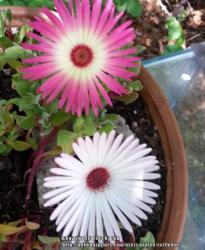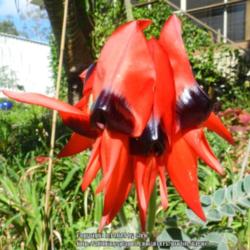Has anyone with a hot/humid season had luck with Livingstone Daisy? I'm talking about the REAL Livingstone Daisy, not that ridiculously mis-named "Mezoo" imposter (a nice plant in it's own right, but not at all a Livingstone Daisy). See here:
Livingstone Daisy (Cleretum bellidiforme)
Is Livingstone Daisy an annual or perennial? (Some references say they are perennial in frost-free areas.)
Are they cool-season or warm-season plants? I have read they do well in Miami, but is that in winter, or in summer (or both)?
Do they =really= like relatively dry soil (as is so often stated), or do they prefer free-draining but moist soil?
I have been growing them from seed for three years now. I have tried fall-sowing and spring-sowing. If the soil starts to dry out, the leaves shrivel up badly and plants die. (The result, I guess, of either lack of moisture, or damaged/diseased root system.)
If I keep the soil moist, eventually the flesh starts disappearing from the base of the plants, the roots die, the plant starts to shrivel and will die if not replanted deeper into soil. I suspect fungal involvement here, as I have had my best success this year by spraying the plants and soil with chamomile tea when I see them start to decline. The tea apparently either combats a disease (fungal attack?) situation or provides some needed nutrient, as the plants always look remarkably better the next day.
Seedlings this year:


The cinder block chunks idea was new this year. Figured I could let the soil dry more but allow moisture access to the plants if they wanted it. Also, I realize the pot is grossly over-planted. I had missed planting last fall, and since these tiny seed were now three years old, I expected greatly reduced viability. I was wrong. I think every seed sprouted.
This year, I raised the plants to 4-5" and started getting some really nice blooms:


But once again, the plants are in decline. I was out of town for a few days and didn't catch the decline early. Once again, Chamomile tea has helped a lot. I have pulled and individually potted several of the larger/worst ones. I'm trying to keep them regularly sprayed with the tea (every 2-3 days). They are looking much better, like they intend to pull through.
I keep reading how easy they are, how you can propagate from cuttings, etc. I am not a newbie to gardening, and while I have had my share of failures, I have learned a lot and have had a lot of successes as well. If I have to keep frequently spraying with Chamomile tea I'm going to have to start growing my own Chamomile (which I may do, anyway



).
I really, really, really, REALLY like these plants and hope someone can offer some advice.
Someone? Anyone???
Ron




